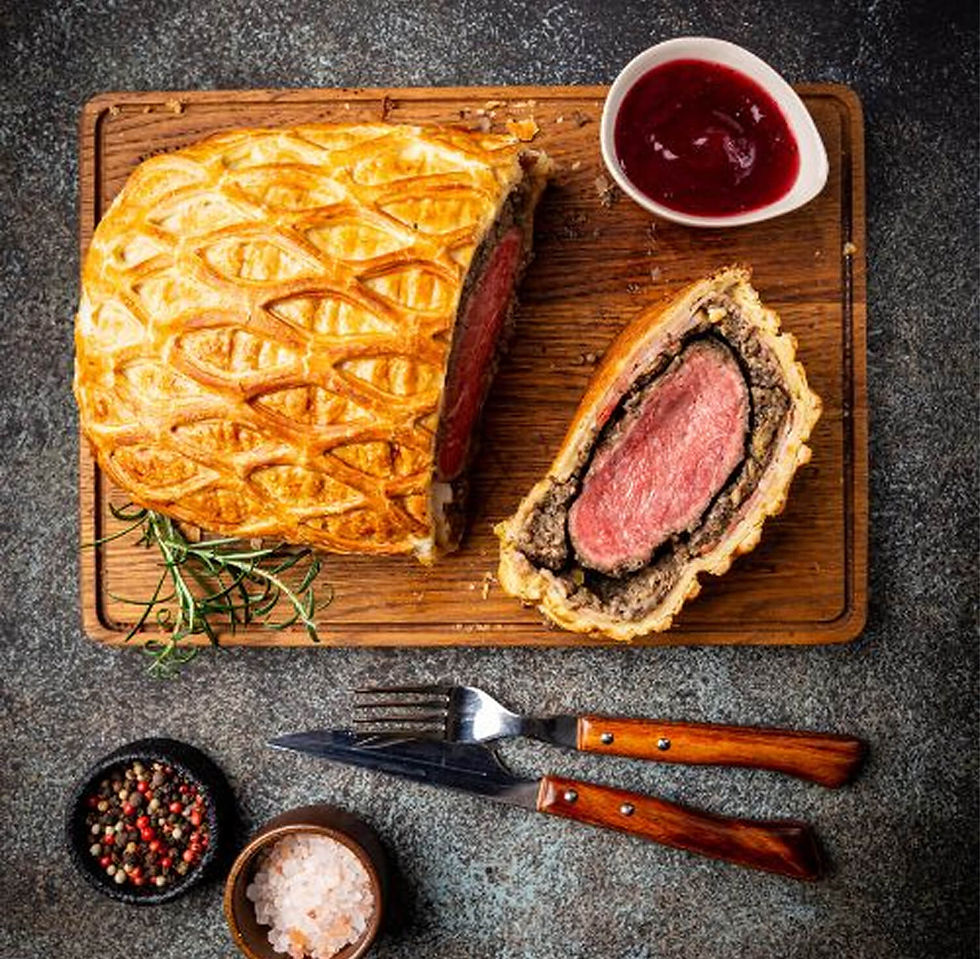Spaghetti Squash with Marinara Sauce
- bobbyauthorassista
- Nov 10, 2023
- 5 min read
Updated: Nov 20, 2023

This time of year, winter squash displays are common in both farmers’ markets and grocery stores. These autumn treasures include a hodgepodge of ornamental shapes, colors, and sizes. I love decorating with winter squash—their deep green, red, orange, and gold colors add a festive fall flavor to my home. For years, I purchased winter squash as décor because I didn’t know what else to do with them.
Acorn squash was the only variety of winter squash my mother prepared. So, for many years it was the only type I felt comfortable fixing. As I’ve experimented with cooking different varieties, I must admit I’m hooked. They are delicious. I still buy them for decorations, but now several weeks after purchasing them and enjoying their festive flair, I cook them up and my family enjoys a tasty treat.
Following is a primer to help you become more familiar with the many varieties available this time of year. Winter squash with a thick skin will keep for months. If you are pinching pennies and your supermarket has winter squash on sale, stock up.
Acorn Squash: This is the most common variety. Its skin can be buff-colored, orange, or green. It has smooth, sweet flesh that can be a bit stringy.
Buttercup Squash: This variety is stocky in shape with a turban top that enlarges as the squash matures. When baked, its fine, dry flesh is smooth and tastes like roasted chestnuts and sweet potato.
Butternut Squash: Considered the most common all-purpose squash because of its abundant, firm flesh, the butternut squash has smooth buff-colored skin and a thick neck attached to a bulbous bottom. It has a blazing orange flesh and a creamy texture when cooked. This is my favorite squash to use for making soup and bisques.
Cheese Pumpkin: This variety looks like a slightly flattened jack-o-lantern. Its sweet orange flesh is perfect for soups or risottos and makes a delicious filling for tortellini. I like to cut this variety into wedges, wrap the wedges with prosciutto, and roast them. Delicious!
Jarrahdale: This is an Australian variety that has a classic pumpkin appearance. Its skin, however, is more celadon or powdery green in color. It has deep orange flesh with a silky, creamy texture. Because it is a bit bland in flavor, it is best paired with flavorful ingredients. Jarrahdale squash are often used in dessert custards or pies.
Red Kuri: This squash has a crimson-orange skin and an elegant round shape that comes to a slight point on the stem end. Its flesh is smooth and dry with a chestnut-like flavor similar to Kabocha squash. It is perfect for creamy soups and curries.
Kabocha: This squat, dark green squash has a thick skin, light orange flesh, and a dry texture, which is similar to chestnuts when cooked. Kabocha is a good option for curries because it holds its shape well when cooked.
Blue Hubbard: This large, round squash comes to a point at the blossom end. It has thick, matte, gray-green skin. Its brilliant orange flesh is often sweet and a bit watery. The Blue Hubbard squash is used in pies and soups and as a tortellini filling.
Delicata: This small squash has a delicate yellow skin with green and orange stripes. Delicatas are often halved and then stuffed with wild rice stuffing or peeled and added to roasted root vegetables. They can spoil easily if their skin has any nicks, so choose this variety carefully. The delicata is best refrigerated after purchase.
Spaghetti Squash: This variety is golden yellow in color. It has a thin, hard skin and a lightly sweet, mild flavor. It is grown for its prominent fibers. The larger the squash, the thicker the strands, which are dressed like pasta.
Sweet Dumpling: This small squash has cream-colored skin and ivy green stripes. After a few weeks of storage, this squash turns a golden yellow with orange stripes. Its pale yellow flesh is starchy with a sweet, corn-like flavor. Its small size makes it ideal for roasting or stuffing. You can also cut this variety into wedges and roast the wedges—its skin is edible.
Following is my husband’s favorite preparation for spaghetti squash:
Spaghetti Squash with Marinara Sauce
Serves 4 to 6
Use San Marzano tomatoes if you make this recipe. The San Marzano tomato is a plum tomato that comes from Italy. This type of tomato is juicy but not watery and has a sweet taste and a robust flavor, making it the perfect tomato to use in sauces. You will find San Marzano tomatoes stocked on the supermarket shelf along with other canned tomatoes.
For the Marinara Sauce:
3 tablespoons extra virgin olive oil 5 garlic cloves, minced
1 can (28-ounces) whole San Marzano tomatoes
¼ teaspoon crushed red pepper flakes, or to taste
1 teaspoon dried oregano leaves
1 teaspoon salt
Place a large skillet over medium heat and add olive oil. When oil is hot, add garlic. As soon as the oil and garlic sizzle, add tomatoes. Using a potato masher or fork, break up tomatoes. Reduce heat to simmer and continue simmering for 30 to 40 minutes.
For the Spaghetti Squash: 1 spaghetti squash (about 3 pounds) Extra virgin olive oil Salt to taste Black pepper to taste Preheat the oven to 400 degrees F. Line a baking sheet with parchment paper. Using a large chef knife, cut spaghetti squash in half lengthwise and scoop out seeds. Brush the cut-side with olive oil and sprinkle generously with salt and pepper.
Place the squash cut-side down on the baking sheet and roast for 45 to 50 minutes, or until squash is cooked through.
Using a fork, scrape the flesh, separating it into spaghetti-like noodles. As you scrape, look for any seeds you missed and remove them before plating. To serve: Fresh basil Grated Parmesan cheese for sprinkling
Place spaghetti squash in a pasta bowl. Top with marinara sauce and garnish with basil and parmesan cheese.
Tips on selecting for winter squash: Buy rock-hard squash. When you press hard on squash, it should not give to pressure. Its skin should be matte, not shiny. Select squash with firm, full, cork-like stems. Avoid specimens that have skinny or green stems. When buying butternut squash, look for small bottoms and a long neck. Do not buy squash with soft spots or bruises. When buying delicata squash, avoid specimens with bruises, soft spots, or cuts.
Tips on storing winter squash: Store squash in a cool, dry place. Thick-skinned squash-like blue hubbard can last for months. Squash with soft, moist flesh surrounding the seedpod deteriorate more quickly.
Carol Ann

Carol Ann Kates is the award-winning author of cookbook, Secret Recipes from the Corner Market and Grocery Shopping Secrets. She’s an expert in how to shop, select, and store produce for maximizing home cooking outcomes and minimizing time and money spent. As a former supermarket and deli operator, Carol Ann shares grocery-insider wisdom—the same expertise you used to receive when patronizing a mom-and-pop establishment. Contact her at CarolAnn@CarolAnnKates.com and explore her website, www.CarolAnnKates.com.
Copyright 2023 All Rights Reserved Carol Ann Kates
1
Searing the Beef
Sear beef fillets on high heat for 2 minutes per side to form a golden crust. Let it cool before proceeding to keep the beef tender.
1
Searing the Beef
Sear beef fillets on high heat for 2 minutes per side to form a golden crust. Let it cool before proceeding to keep the beef tender.
1
Searing the Beef
Sear beef fillets on high heat for 2 minutes per side to form a golden crust. Let it cool before proceeding to keep the beef tender.
1
Searing the Beef
Sear beef fillets on high heat for 2 minutes per side to form a golden crust. Let it cool before proceeding to keep the beef tender.
Notes



1
Season the good fresh beef fillets with salt and black pepper. Heat olive oil in a pan over high heat and sear the fillets for 2 minutes per side until it fully browned. Remove the beef from the pan and brush with a thin layer of mustard. Let it cool.



1
Season the good fresh beef fillets with salt and black pepper. Heat olive oil in a pan over high heat and sear the fillets for 2 minutes per side until it fully browned. Remove the beef from the pan and brush with a thin layer of mustard. Let it cool.



1
Season the good fresh beef fillets with salt and black pepper. Heat olive oil in a pan over high heat and sear the fillets for 2 minutes per side until it fully browned. Remove the beef from the pan and brush with a thin layer of mustard. Let it cool.



1
Season the good fresh beef fillets with salt and black pepper. Heat olive oil in a pan over high heat and sear the fillets for 2 minutes per side until it fully browned. Remove the beef from the pan and brush with a thin layer of mustard. Let it cool.
Instructions
Quality Fresh 2 beef fillets ( approximately 14 ounces each )
Quality Fresh 2 beef fillets ( approximately 14 ounces each )
Quality Fresh 2 beef fillets ( approximately 14 ounces each )
Beef Wellington

Beef Wellington
Fusion Wizard - Rooftop Eatery in Tokyo
Author Name

Beef Wellington is a luxurious dish featuring tender beef fillet coated with a flavorful mushroom duxelles and wrapped in a golden, flaky puff pastry. Perfect for special occasions, this recipe combines rich flavors and impressive presentation, making it the ultimate centerpiece for any celebration.
Servings :
4 Servings
Calories:
813 calories / Serve
Prep Time
30 mins
Prep Time
30 mins
Prep Time
30 mins
Prep Time
30 mins










Comments